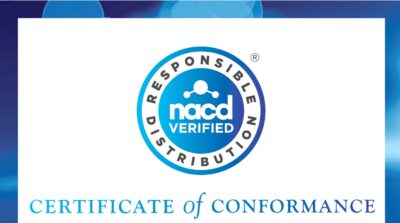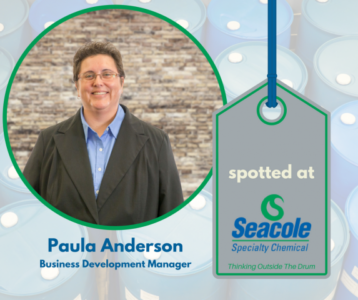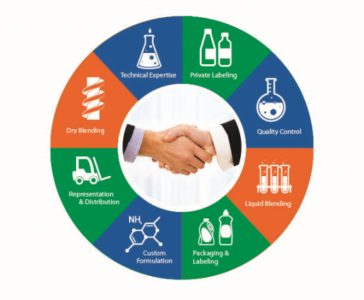Controlling the phosphorus content of your electroless nickel plating bath affects the properties of the final coating and its performance in the field. With the right chemistries, you can adjust the phosphorus content of your bath to achieve the magnetic properties, ductility, and solderability your part requires.
Seacole’s surface finishing team has decades of combined experience helping manufacturers source the appropriate chemistries for their electroless nickel plating baths. Our supplier partner Metal Chem offers superior products for controlling phosphorus levels to influence the hardness, corrosion resistance, and magnetic properties of the final coating. Let’s take a closer look at the role phosphorus plays in electroless nickel plating and the Metal Chem products that may be ideal for your process.
Understand the Basics of Electroless Nickel Plating
Electroless nickel plating is an autocatalytic surface finishing process. It deposits a uniform layer of nickel-phosphorus alloy onto a substrate without the use of an external electrical current.
This technique is widely used in industries requiring wear resistance, corrosion protection, and uniform coating over complex geometries. One step of the electroless nickel plating process is the chemical reduction of nickel ions in the solution using a reducing agent, typically sodium hypophosphite. This introduces phosphorus into the deposit.
Role of Phosphorus in Electroless Nickel Plating
Phosphorus influences the coating’s magnetic properties, ductility, and solderability. As these properties affect the performance of the part in the field, it is essential to precisely control the phosphorus content of your electroless nickel plating bath.
One of the unique properties of electroless nickel plating is the ability to alter the alloying phosphorus content in the deposit. Generally, there are three accepted ranges of phosphorus.
• Low-phosphorus deposits (1–4%) tend to be harder and offer better wear resistance.
• High-phosphorus deposits (10–13%) exhibit superior corrosion resistance due to their amorphous structure.
• Medium-phosphorus deposits (5–9%) are the most common and strike a balance between hardness and corrosion protection.
The chemistries used in an electroless nickel plating bath play critical roles in controlling the phosphorus content of the coating. Key variables influence the amount phosphorus in the final coating. These include the concentration of the reducing agent (usually sodium hypophosphite), the nickel source, pH, temperature, and the presence of complexing and stabilizing agents.
Higher concentrations of sodium hypophosphite and lower bath pH levels typically increase phosphorus content. Higher temperatures and specific complexing agents can reduce phosphorus content. Adjusting these parameters produces low-, medium-, or high-phosphorus coatings tailored to desired performance characteristics, such as hardness, corrosion resistance, or magnetic properties.
Three Metal Chem Solutions for Optimal Phosphorus Content
When sourcing chemistries for your electroless nickel coating process, it’s essential to work with an experienced team and trusted products. Seacole’s supplier partner Metal Chem offers formulations for low, medium, and high phosphorus content. Each of these processes are specifically designed to meet and exceed the required specifications while still being easy to use.
Meta-Plate 1200 for Low Phosphorus Applications
Meta-Plate 1200 is specially designed for the electroless nickel plating process. It produces a 1–3% phosphorus alloy capable of achieving ASTM B733 Type II coating. Meta-Plate 1200 is formulated to provide compressively stressed hard electroless nickel deposits with excellent corrosion resistance in alkaline environments.
Meta-Plate UCB for Medium Phosphorus Applications
The ultimate connector bath, Meta-Plate UCB is a lead- and cadmium-free medium phosphorous bath that limits phosphorus to 7–9%. Meta-Plate UCB is a semi-bright, ductile, and high-speed electroless nickel bath that is specifically designed to meet and exceed aluminum connector and aerospace industry criteria. It is ideal for applications requiring 100 hours of NSS on aluminum substrates.
Meta-Plate 2900 for High Phosphorus Applications
Meta-Plate 2900 is an easy-to-use, high phosphorous electroless nickel plating process designed to offer the highest stable range of phosphorus of 11–13%, meeting and exceeding Mil-C-26074, AMS-2404, and ASTM-B733 specifications. Meta-Plate 2900 is ideal for semi-conductor, electronic, and connector applications.
Controlling the phosphorus content of your electroless nickel plating coating ensures superior performance in the field. Seacole’s expert technical team works with you to identify the chemistries that will efficiently achieve your required phosphorus levels. To learn more about the Metal Chem products listed here or our other electroless nickel plating chemistries, contact the Seacole team today.





